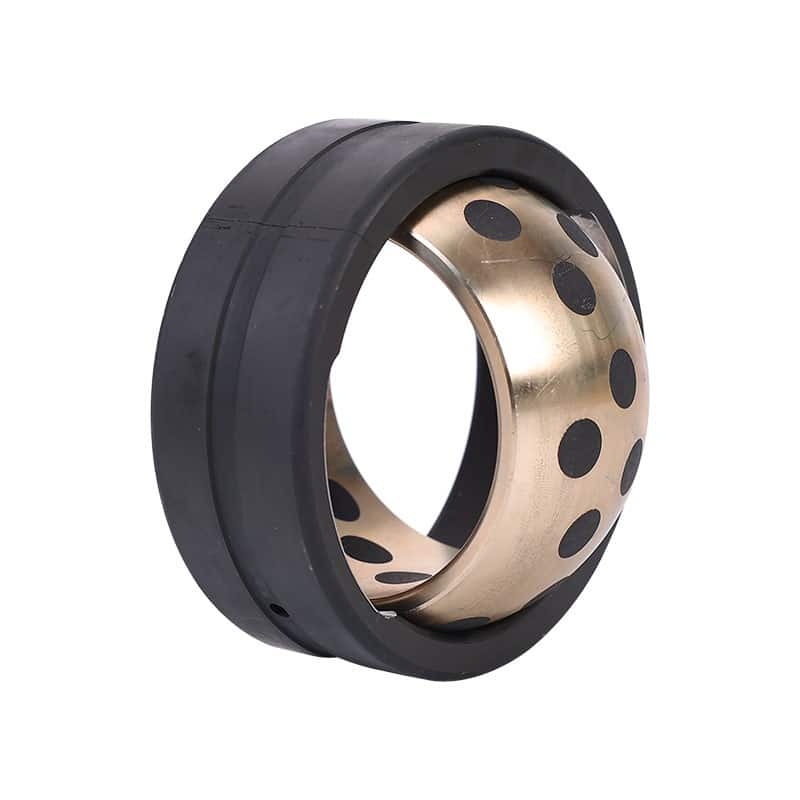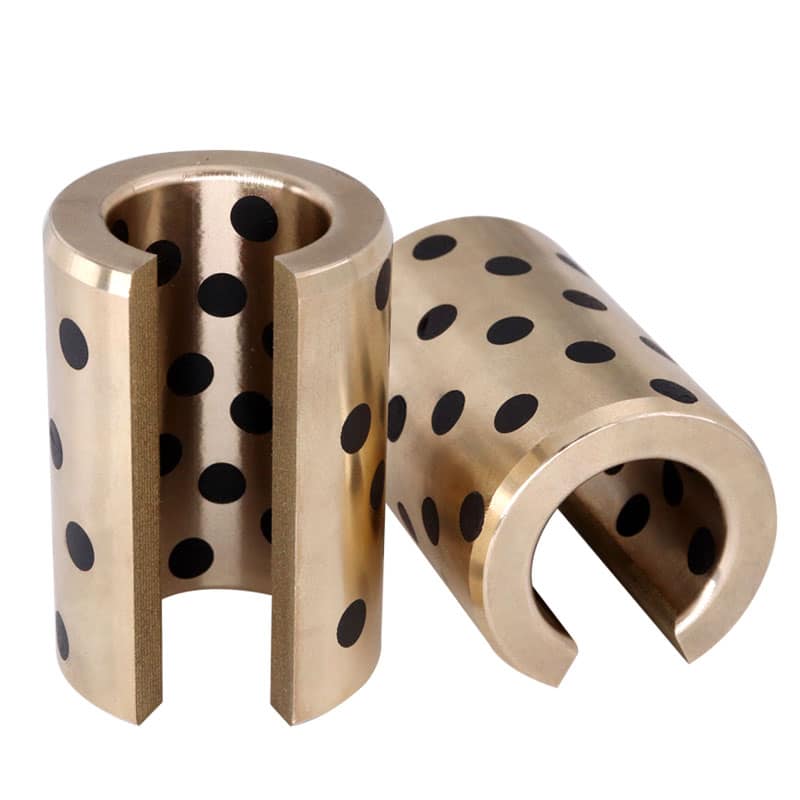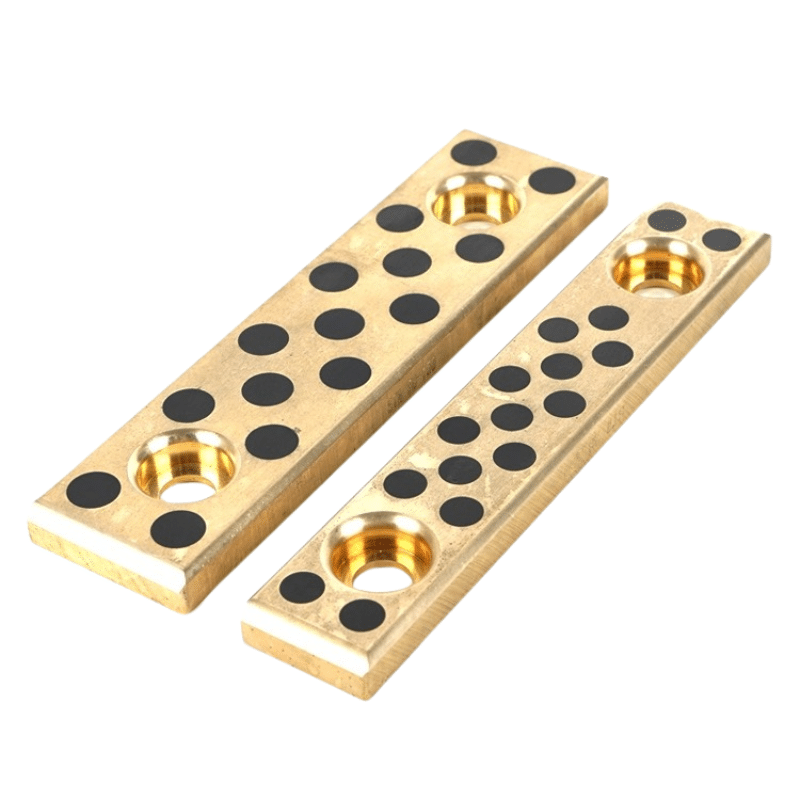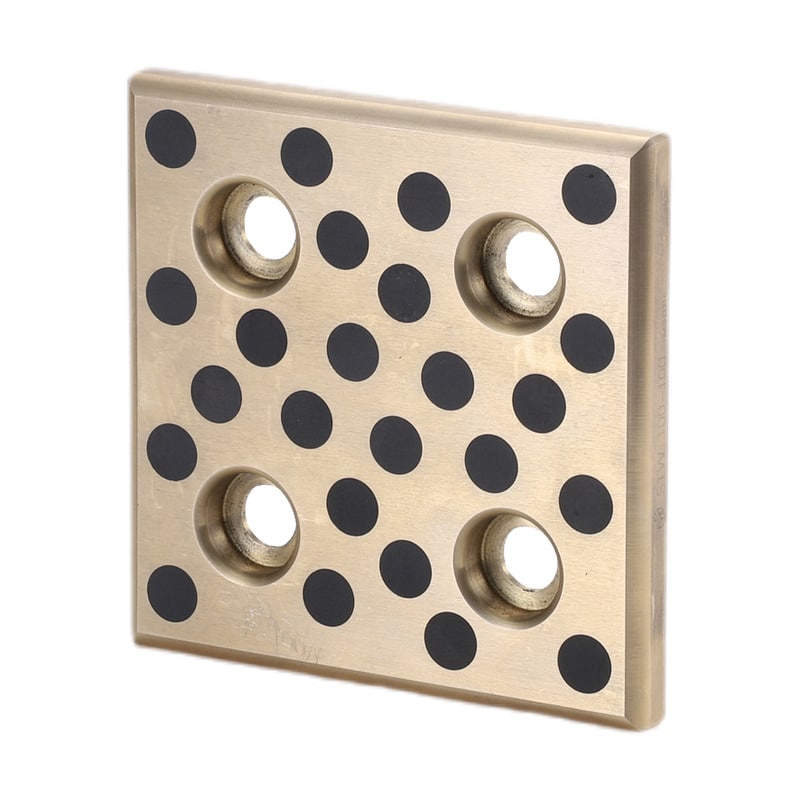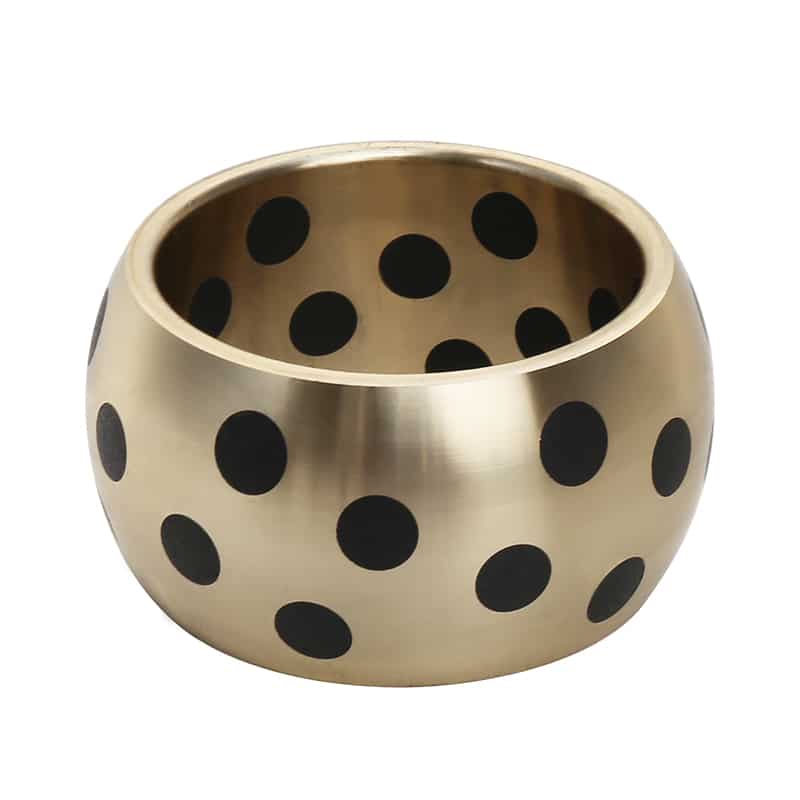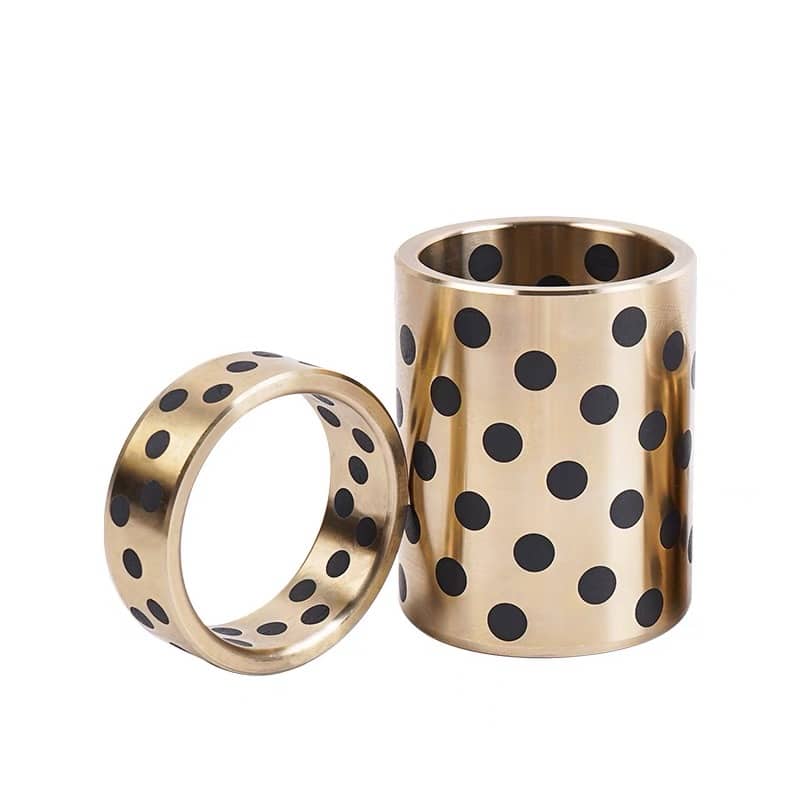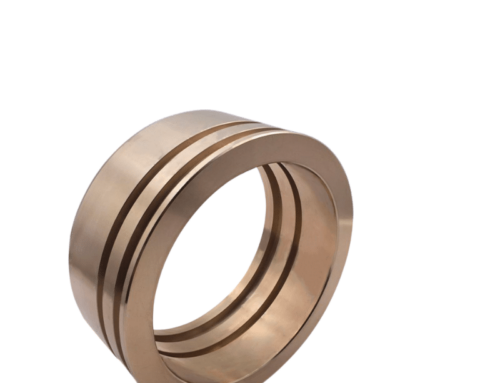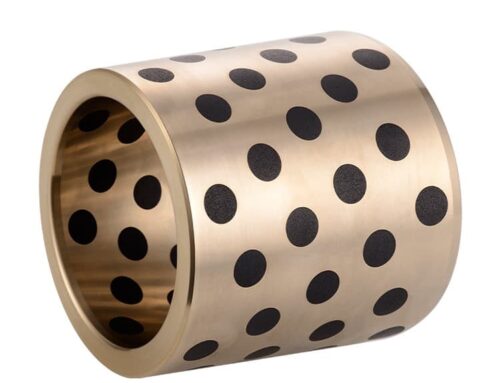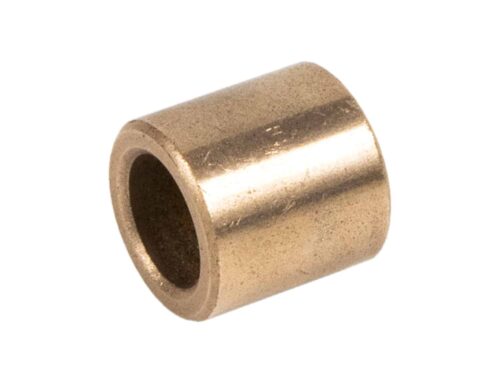CNC Bronze Bushing Design, Base Metal and Alloys
Breathtaking design for home living.
in CNC manufacturing and repair, that cares about providing value and exceptional quality of service for customers across the world.
Nam aliquet ante porta, gravida elit interdum, luctus porta sapien justo, at fringilla felis suscipit vestibulum.
maintenance-heavy bushing, oil or grease lubrication is necessary. designs lubrication grooves to reduce maintenance to a minimum.
Precision machining of bronze bushings involves the use of advanced techniques to create high-quality, wear-resistant components. Bronze bushings, made from an alloy of copper and tin, are crucial for the efficient operation of heavy machinery, providing a low-friction interface and excellent sliding properties. The machining process requires the use of top-quality cutting tools at the right speed and feed to achieve the precision measurements required for these components. Custom bronze bushings can be tailored to specific machinery needs, ensuring a perfect fit and maximum performance, and are often manufactured using CNC machining for durability and reliability. Cast bronze bushings, created by machining cast bronze bars, exhibit excellent structural strength, durability, and resistance to compressive forces, making them suitable for harsh, high-wear applications in various industries.

In a maintenance-heavy bushing, oil or grease lubrication is necessary to ensure proper functioning and prevent excessive wear or damage. Without proper lubrication, the bushing may overheat, seize, or wear prematurely.
To reduce maintenance requirements and prolong the lifespan of the bushing, designers often incorporate lubrication grooves into the design of the bushing. These grooves serve to distribute lubricant evenly and efficiently throughout the bushing, reducing the need for frequent maintenance.
Lubrication grooves can be designed in various configurations depending on the specific requirements of the application. For example, a single circumferential groove may be sufficient for some applications, while others may require multiple grooves or a spiral groove pattern. The size and depth of the grooves can also be tailored to meet the lubrication needs of the application.
In addition to lubrication grooves, other design features can also help to reduce maintenance requirements for bushings. For example, self-lubricating bushings may be used in applications where frequent lubrication is not feasible. These bushings are typically made from materials such as bronze, which contain embedded solid lubricants that provide a self-lubricating effect.
Overall, proper lubrication and design features such as lubrication grooves are essential for reducing maintenance requirements and prolonging the lifespan of a maintenance-heavy bushing. It is important to follow the manufacturer’s recommendations for lubrication and maintenance to ensure the bushing functions properly and lasts as long as possible.
Oilless Bearing Bushing Production
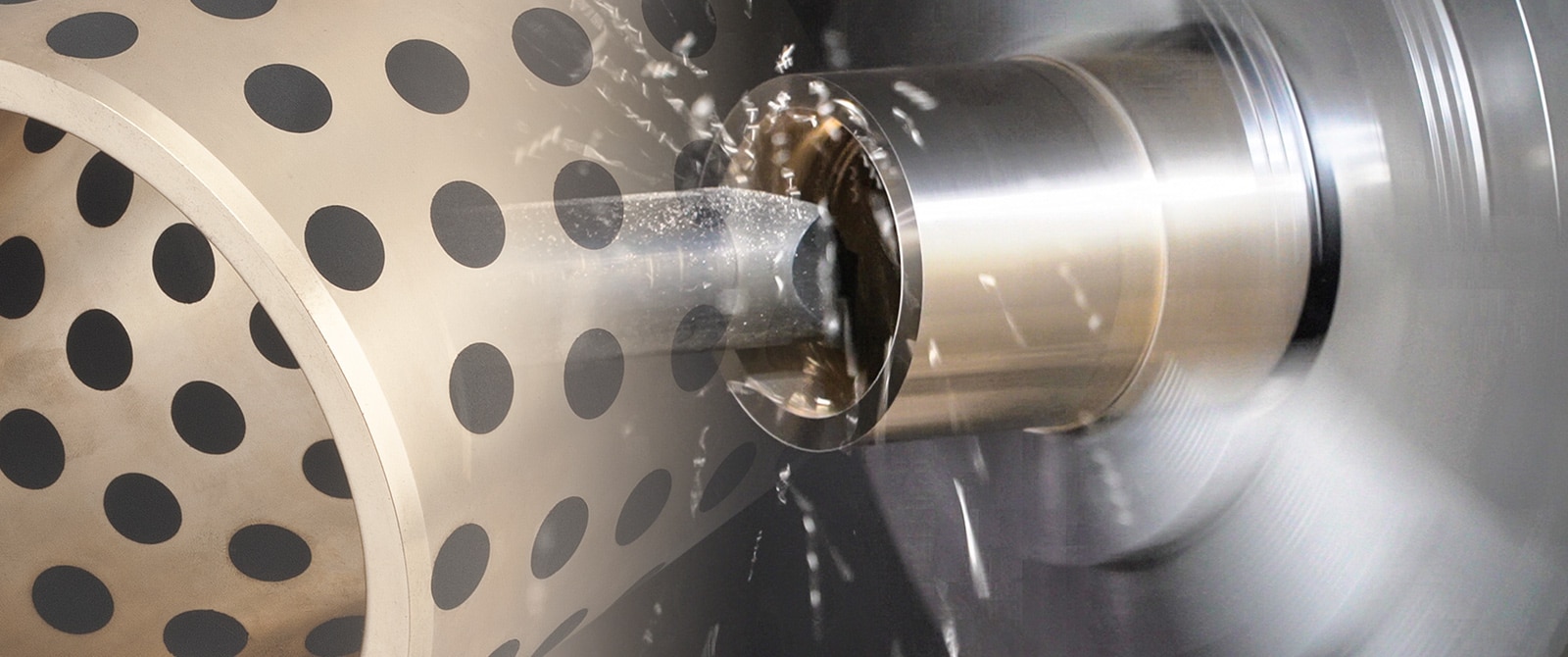
Oilless bronze bearing bush self-lubricating with …
Oilless bearing bushings, also known as self-lubricating bearings, are bearings that are designed to operate without the need for external lubrication. Instead, they rely on embedded solid lubricants or other self-lubricating materials to provide a low-friction surface between the bearing and the shaft.
The production of oilless bearing bushings typically involves several steps:
- Material selection: The choice of material is critical for oilless bearing bushings, as it will determine the bearing’s load capacity, wear resistance, and other properties. Common materials used for oilless bearing bushings include bronze, graphite, and PTFE (polytetrafluoroethylene).
- Mixing: The raw materials are mixed together in a precise ratio to create a homogenous mixture that will form the basis of the bearing bushing.
- Forming: The mixture is then formed into the desired shape of the bearing bushing, often using a process such as powder metallurgy or injection molding. During the forming process, the embedded lubricants or other self-lubricating materials are also added to the mixture.
- Sintering: The formed bearing bushing is then sintered, or heated to a high temperature, in order to fuse the particles together and create a strong, solid material.
- Finishing: The finished bearing bushing may undergo additional machining or finishing processes, such as grinding or polishing, to ensure that it meets the required specifications and tolerances.
The production of oilless bearing bushings requires a high level of precision and expertise, as even small variations in material composition or manufacturing processes can have a significant impact on the performance of the bearing. However, the resulting bearings are highly durable, low-maintenance, and well-suited for use in a wide range of applications, including heavy equipment, automotive parts, and medical devices.
Production process
Metallurgy
Smelting is to put metal materials and other auxiliary materials into a heating furnace for melting and tempering, and the furnace materials undergo certain physical and chemical changes in the high temperature (1300-1600K) furnace, producing crude metal or metal enrichment and slag. metallurgical process
Continuous casting & centrifugal casting
Horizontal continuous casting refers to the type of continuous casting in which molten steel is injected into the horizontally placed mold from the horizontal direction, and the solidification process of the slab and the movement in the casting machine until it reaches the cooling bed are all in a horizontal state.
Centrifugal casting is a method of forming tubular or hollow cylindrical products by centrifugal force. Put a quantitative amount of liquid resin or resin dispersion in a rotating (i.e. mold) and make it rotate around a single axis at high speed
Blanking die
Unloading refers to the process of removing a certain shape, quantity or quality of material from the whole or batch of materials after determining the shape, quantity or quality of the material required to make a certain equipment or product.
Blank processing
Raw materials that have not yet been processed can also refer to the part before the finished product is processed.
Inspection
Inspection of raw materials that are not finished products can also refer to the part of inspection before the finished product is completed
Drill
Drilling is the operation of using a drill to create a hole in a solid material.
Inlaid graphite
According to the working conditions, holes are machined on the working surface in a certain proportion and filled with solid lubricant. The high-strength copper alloy provides high load-carrying capacity and the solid lubricant can form lower friction
Finish the outer half
Inner and outer diameter precision turning
Chamfer
Inspection, Packing, Shipping
OILLESS BEARING MANUFACTURING
FROM MATERIAL CASTING TO FINISH PARTS
DELIVERY IN TIME
SHIPMENT BY AIR OR BY SEA
CNC Machining – Custom parts ship within days, Rapid CNC Machining.
Bearing Manufacturer – A World of BushingRapid CNC Machining – High precision, Small batch, Cast Bronze Bearing Production process
CNC machining is a manufacturing process that involves the use of computer-controlled machines to create custom parts from a variety of materials. The process involves removing material from a solid block of material using a rotating cutting tool to create the desired shape and size of the part.
One of the main advantages of CNC machining is its ability to produce custom parts quickly and accurately. This is particularly useful for rapid prototyping and small-batch production runs, where traditional manufacturing processes may be too time-consuming or expensive.
With modern CNC machining technology, custom parts can be designed and manufactured in a matter of days. This rapid turnaround time is made possible by the use of advanced computer-aided design (CAD) software, which enables the designer to create a 3D model of the part that can be translated into machine-readable code.
Once the code is generated, it can be used to program the CNC machine, which can then automatically produce the part with a high degree of accuracy and repeatability. The use of CNC machining also allows for a high level of customization and flexibility, as the machine can be reprogrammed quickly and easily to produce different parts as needed.
Overall, CNC machining is a valuable tool for creating custom parts quickly and accurately, which can be particularly useful in industries such as aerospace, automotive, and medical device manufacturing. The ability to produce custom parts in a matter of days can help companies to streamline their production processes, reduce costs, and bring new products to market more quickly.
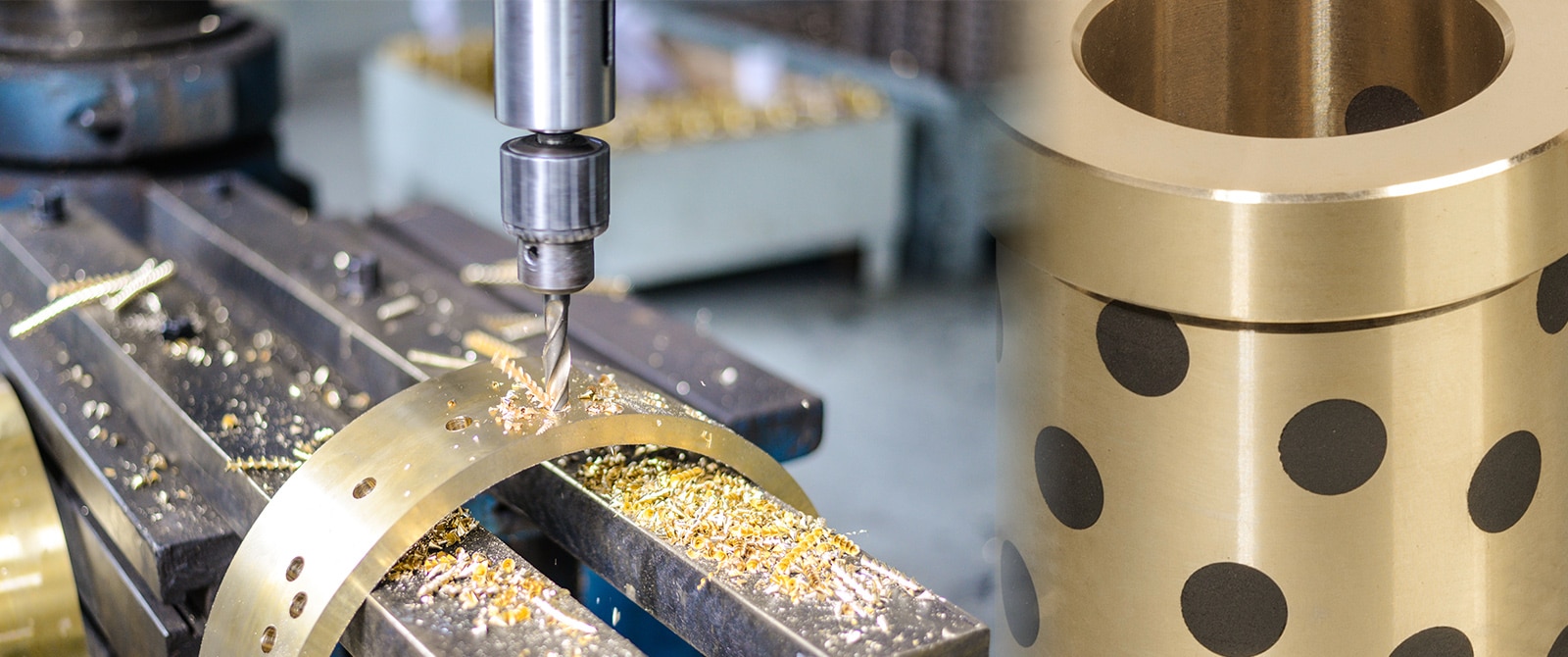
Rapid CNC Machining House – High Precision, Small batch
- Precision CNC Machining – Custom Oilless Parts Made Fast, 3-axis, 4-axis, 5-axis, as well as right angle milling capabilities.
- Upload your CAD file for an instant price and delivery date. Precision Machining Services.
- High-quality rapid custom prototyping and manufacturing services for self-lubricating oilless bearing development.
- Global Team Based in China. Upload Your CAD File For a Free…
Bronze Bushings – Manufacturing Process
Bronze bushings are produced by machining from rods and castings. The process involves cutting rods to the desired size and then machining them on a lathe. Grooves and another machining can also be done on a lathe and milling machine.
Precision CNC Machining, will revolutionize your milling applications. We can help you create a safer work environment. Custom Parts Made Fast. High-quality rapid custom prototyping and manufacturing services for product development. Bushings – Large Range Of Sizes, Bronze bearing and method of manufacture
The main feature of this series is the high load capacity at low circumferential speeds. The base metal can be various alloys of bronze, cast iron and stainless steel. The solid lubricant covering 30-35% of the friction surface consists of graphite and PTFE, modified by the addition of additives such as waxes and metal oxides to improve the coefficient of friction. Typical applications: steel industry, automotive stamping and plastic molds, general machinery. Quality Bushing. See Our Online Catalog & Request A Quote! Bearings & Cast Materials Made To The Highest Standards. Shop Our Huge Range Of Sizes! Hundreds Of Sizes. Top Customer Service. View Our Catalog.
Precision Machining Services, precision machining companies, CNC machining, precision engineering company. Machining is a prototyping and manufacturing process that creates the desired shape by removing unwanted material from a larger piece of material. Since a part is built by taking away material, this process is also known as subtractive manufacturing.
We manufacture custom precision bronze bushing tailored to your individual needs.
Solid-turned bronze bushing Alloys
Solid turned bronze bushing Alloys: CuSn7ZnPb (RG7), CuSn10, CuSn12, CuPb10Sn, CuPb15Sn, CuAl10Ni, CuSn10Zn (RG10), CuZn25Al5, CuSn5ZnPb (RG 5)
Bronze bushings are commonly used in various industrial applications due to their high strength, good wear resistance, and low friction characteristics. There are several types of bronze alloys available, each with different compositions and properties. Here’s a brief overview of the solid turned bronze bushing alloys you mentioned:
CuSn7ZnPb (RG7): This is a leaded bronze alloy, which offers good machinability and wear resistance. It is often used in applications where high loads and low speeds are involved.
CuSn10: This is a phosphor bronze alloy, which offers good strength, fatigue resistance, and corrosion resistance. It is often used in high-load and high-wear applications such as bushings, bearings, and gears.
CuSn12: This is another phosphor bronze alloy, which has similar properties to CuSn10 but with slightly higher strength and wear resistance. It is often used in applications such as marine equipment, pumps, and valves.
CuPb10Sn: This is a leaded tin bronze alloy, which offers good machinability and wear resistance. It is often used in applications such as automotive engine bearings, pumps, and valves.
CuPb15Sn: This is another leaded tin bronze alloy, which has similar properties to CuPb10Sn but with higher strength and wear resistance. It is often used in high-load and high-wear applications.
CuAl10Ni: This is an aluminum bronze alloy, which offers good strength, corrosion resistance, and wear resistance. It is often used in applications such as marine equipment, aircraft parts, and hydraulic components.
CuSn10Zn (RG10): This is a tin-zinc bronze alloy, which offers good strength, corrosion resistance, and wear resistance. It is often used in applications such as bearings, gears, and bushings.
CuZn25Al5: This is an alpha-brass alloy, which offers good strength, corrosion resistance, and thermal conductivity. It is often used in applications such as heat exchangers, plumbing fixtures, and electrical components.
CuSn5ZnPb (RG 5): This is another leaded bronze alloy, which offers good machinability and wear resistance. It is often used in applications such as gears, bearings, and bushings.
Solid turned bronze bushing, heavy-maintenance, DIN 1850/ISO 4379, Heavy maintenance
Solid-turned bronze bushings are commonly used in heavy-maintenance applications where there is high load and high wear. DIN 1850 and ISO 4379 are standards that provide specifications for solid turned bronze bushings used in heavy-maintenance applications.
According to these standards, solid turned bronze bushings used in heavy-maintenance applications should have the following characteristics:
High load capacity: The bushing should be able to withstand high loads without deformation or failure.
High wear resistance: The bushing should be able to withstand high wear without significant loss of material or performance.
Low friction: The bushing should have low friction characteristics to reduce energy loss and wear.
Corrosion resistance: The bushing should be able to resist corrosion and other forms of chemical attack.
Good thermal conductivity: The bushing should be able to dissipate heat generated during operation to prevent overheating.
Good machinability: The bushing should be easy to machine and install.
In heavy-maintenance applications, solid turned bronze bushings are often used in conjunction with other components such as pins and plates to create a mechanical linkage. These linkages are commonly found in heavy equipment such as bulldozers, cranes, and mining equipment.
Regular maintenance is essential to ensure the proper functioning of solid turned bronze bushings in heavy-maintenance applications. This may include regular inspection, cleaning, lubrication, and replacement of worn or damaged components.
Custom production of tin bronze bushings
Professional manufacturer of tin bronze bushings, specializing in the production of various specifications of aluminum bronze bushings, graphite bushings, copper worm gears, copper nuts, copper sliding plates and other aluminum bronze products, and also provide tin bronze, brass bearing, high force brass and other non-ferrous metals processing casting.
ZCuSn10Pb1, ISO grade CuSn10P, British BS grade PB1, German DIN grade G-CuSn10. sand casting tensile strength of 200MPa, yield strength of 100MPa, elongation of 3%, Brinell hardness of HBS 785; metal casting tensile strength of 310MPa, yield strength of 170MPa. elongation of 2% and Brinell hardness of HBS 885.
In centrifugal casting, the tensile strength is 330MPa, yield strength is 170MPa, elongation is 4%, and Brinell hardness is HBS 785; in continuous casting, the tensile strength is 360MPa, yield strength is 170MPa, elongation is 6%, and Brinell hardness is HBS 885.
Material name: Casting copper alloy (tin bronze material ZCuSn10Pb1 copper sleeve / copper sleeve manufacturers)
Brand: ZCuSn10Pb1
Standard: GB/T 1176-1987
Characteristics and scope of application.
ZCuSn10Pb1 casting copper alloy hardness, good wear resistance, not easy to produce bite phenomenon, good casting performance and cutting performance, good corrosion resistance in the atmosphere and fresh water.ZCuSn10Pb1 casting copper alloy can be used for high load (20MPa or less) and high sliding speed (8m / s) under the work of wear-resistant parts, such as connecting rods, bushings, shaft tiles, gears, worm gears etc.
A professional tin bronze parts material ZCuSn10Pb1 bronze bushing manufacturer, we have accumulated rich experience in making only copper castings for many years. We also produce tin bronze bronze parts, bronze plate, bronze washer, bronze nuts and other tin bronze parts.
Our main casting methods for casting tin bronze bearing material ZCuSn10Pb1 bronze bushings are centrifugal casting and sand casting. Sand casting has a tensile strength of 200MPa, yield strength of 100MPa, elongation of 3%, and Brinell hardness of HBS 785; centrifugal casting has a tensile strength of 330MPa, yield strength of 170MPa, elongation of 4%, and Brinell Hardness of HBS 785.
Our company (copper bushing manufacturers) casting of tin bronze bronze bushing single piece casting weight up to 1000kg, casting diameter up to 2000mm, the company also produces other models of tin bronze products, commonly used grades tin bronze bushing bearing parts material code: QSn4-3, QSn4.4-2.5, QSn7-O.2, ZQSn5-2-5, ZQSN6-6-3, etc..
We adhere to the concept of diversification, cross-regional and technological innovation, and have developed into a superior supplier of copper bushings for coal mines, wind power, mines, environmental protection, metallurgy, heavy machinery and other fields. The company continues to improve, constantly meet customer requirements, sincerely provide customers with high quality and stable products, if necessary, welcome to drawing processing.
Custom tin bronze bearrings, Tin bronze properties
Tin bronze tin content is generally between 3 to 14%, mainly used to make elastic components and wear-resistant parts. The tin content of deformed tin bronze does not exceed 8%, and sometimes add, lead, zinc and other elements. It is a good deoxidizer, and also improves fluidity and wear resistance. The addition of lead to tin bronze improves machinability and wear resistance, and the addition of zinc improves casting properties. This alloy has high mechanical properties, wear reduction and corrosion resistance, easy cutting and processing, good brazing and performance, small shrinkage coefficient, and non-magnetic. Available wire flame spraying and arc spraying preparation of bronze bushings, bushings, anti-magnetic components and other coatings. Size specifications are Ф1.6mm, Ф2.3mm
Tin bronze is a non-ferrous alloy with small casting shrinkage, used to produce complex shapes, clear contours, airtight requirements of the casting, tin bronze in the atmosphere, seawater, fresh water and steam is very resistant to corrosion, widely used in steam boilers and marine parts. Tin bronze has good mechanical properties and can be used as wear resistant parts and elastic parts for high precision workhorses. Leaded tin bronze is often used as wear-resistant parts and sliding bearings. Zinc-containing tin bronze can be used for high airtight castings.
Bronze containing 3% to 14% tin, in addition to often adding, zinc, lead and other elements. It is an early alloy used by mankind, and has been used for about 4,000 years. It is corrosion-resistant, wear-resistant, has good mechanical properties and process properties, and can be well and brazing, impact does not produce sparks. It is divided into processing tin bronze and casting tin bronze. Tin bronze used for pressure processing contains less than 6% to 7% tin, and the tin content of cast tin bronze is 10% to 14%. Commonly used grades include QSn4-3, QSn4.4-2.5, QSn7-O.2, ZQSn10, ZQSn5-2-5, ZQSN6-6-3, etc. Tin bronze is a non-ferrous alloy with a small casting shrinkage, and can be used to produce castings with complex shapes, clear contours and low airtightness requirements. Tin bronze is very resistant to corrosion in the atmosphere, seawater, fresh water and steam, and is widely used in steam boilers and marine parts. Tin bronze has good mechanical properties and can be used as wear resistant parts and elastic parts for high precision workhorses. Leaded tin bronze is often used as wear-resistant parts and sliding bearings. Zinc-containing tin bronze can be used as high airtight castings. Nanhai Non-ferrous Copper Premium Copper Inventory
Tin bronze properties: Tin bronze is corrosion-resistant, wear-resistant, has good mechanical properties and process properties, and can be well and brazing, impact does not produce sparks. Divided into processing tin bronze and casting tin bronze. Tin bronze used for pressure processing contains less than 6% to 7% tin, and the tin content of cast tin bronze is 10% to 14%. Commonly used grades include QSn4-3, QSn4.4-2.5, QSn7-O.2, ZQSn10, ZQSn5-2-5, ZQSN6-6-3, etc. Tin bronze is a non-ferrous alloy with a small casting shrinkage, and can be used to produce castings with complex shapes, clear contours and low airtightness requirements. Tin bronze is very resistant to corrosion in the atmosphere, seawater, fresh water and steam, and is widely used in steam boilers and marine parts. Tin bronze has good mechanical properties and can be used as wear resistant parts and elastic parts for high precision workhorses. Leaded tin bronze is often used as wear-resistant parts and sliding bearings. Zinc-containing tin bronze can be used for high gas tightness castings.
Uses of tin bronze: Industrial tin bronze tin bronze is an important copper alloy used in the industry. In order to improve its casting, mechanical and wear resistance properties, as well as to save tin, alloying elements such as zinc and lead are added to tin bronze. Thus, tin bronze can be divided into three categories: tin bronze, tin-zinc bronze and tin-zinc-lead bronze.
Chemical composition.
Yoga takes you into the present moment. The only place where life exists.
QSn4-3 tin bronze QSn4-3 is a tin bronze containing zinc, with high wear resistance and elasticity, good anti-magnetic properties. QSn4-3 is used to make springs (flat springs, round springs) and other elastic components, corrosion-resistant parts on chemical equipment and wear-resistant parts (such as bushings, discs, bearings, etc.) and anti-magnetic parts for the paper industry scrapers. Chemical composition
- Tin (Sn) 3.5 ~ 4.5
- Zinc (Zn) 2.7 ~ 3.3
- Aluminum (Al) ≤ 0.002
- Silicon (Si) ≤ 0.002 (P) ≤ 0.03
- Iron(Fe)≤0.05
- Lead(Pb)≤0.02
- Copper (Cu) balance
- Antimony(Sb)≤0.002
- Bismuth(Bi)≤0.002
- Total impurities %≤0.2
- Common product shapes in the market are plate, strip, foil, rod and wire.
- Mechanical properties
- Tensile strength: σb (MPa): ≥ 410
- Elongation δ10 (%): ≥8
- Elongation δ5 (%): ≥10
- Note: The longitudinal room temperature tensile mechanical properties of bars
- Specimen size: diameter or distance to the side 5 ~ 12
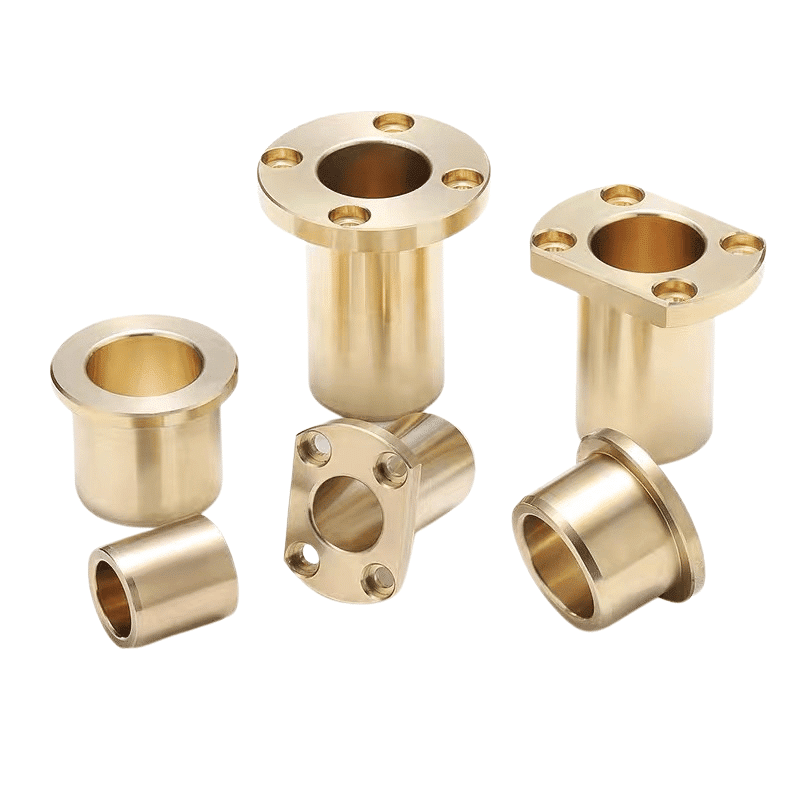
MACHINING FOR RESOURCE INDUSTRIES
Breathtaking design for home living.
What We Do: Machining,
Industrial Bronze Bushing, Hydraulics Bronze Bushing, Rebuilds, Custom Metalwork, Self Lubricated Bearings
Nam aliquet ante porta, gravida elit interdum, luctus porta sapien justo, at fringilla felis suscipit vestibulum.
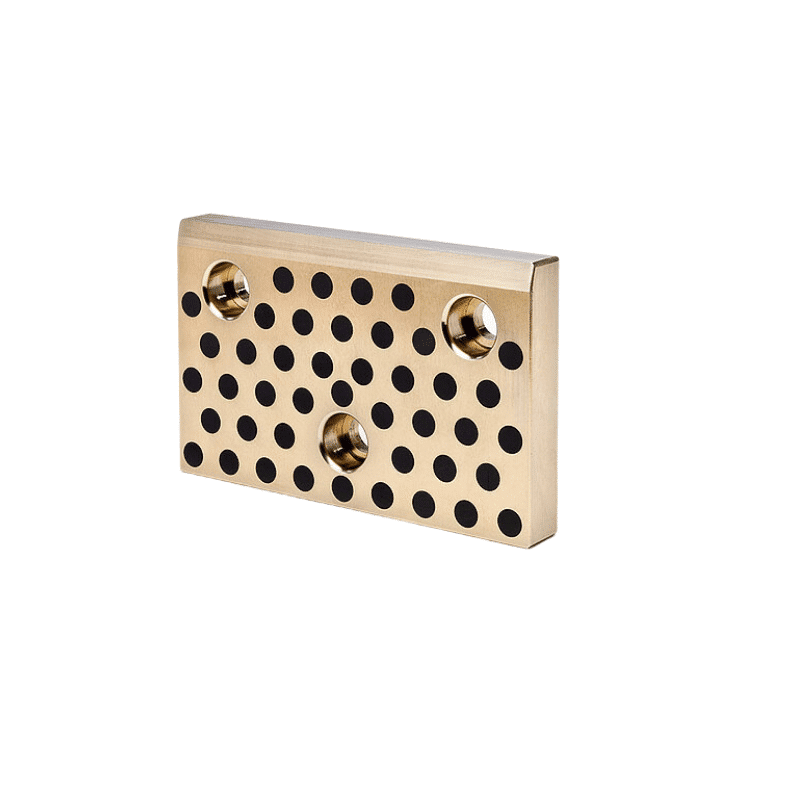
Self Lubricating Bronze Plate
Metal Bronze Graphite Bearings: “The Oilless Graphite Plugged Bearing products” There is a complete line of self-lubricating bronze products that perform well where standard lubrication is prohibited. Especially in heavy duty and high temperature applications. They come in the form of sleeve bearings, washers, wear plates, and can be inserted into pillow block style housings.
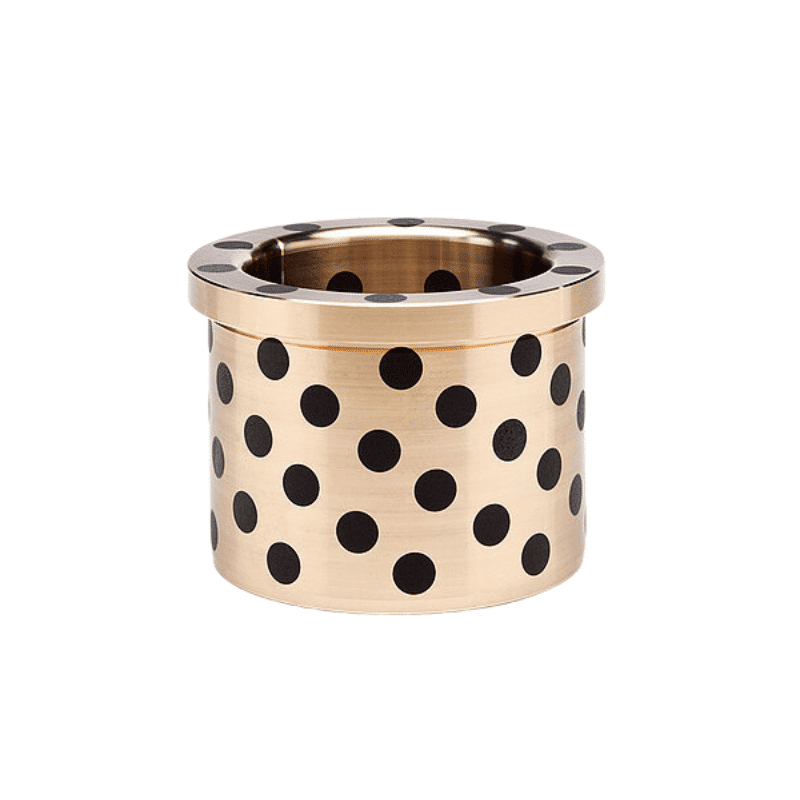
Oilless Bearing Bush
Self Lubricated Manganese Bronze
- Self Lubricated Leaded Tin Bronze
- Self Lubricated Aluminum Bronze
- Custom Aluminum Bushings
- Graphite Impregnated Bronze Bushings
- Graphite Bronze Bushing
- Brass Wear Plate
- High Temp Sleeve Bearings
- Graphite Bronze Plate
- Custom Metal Bushings
We also have other base materials available.
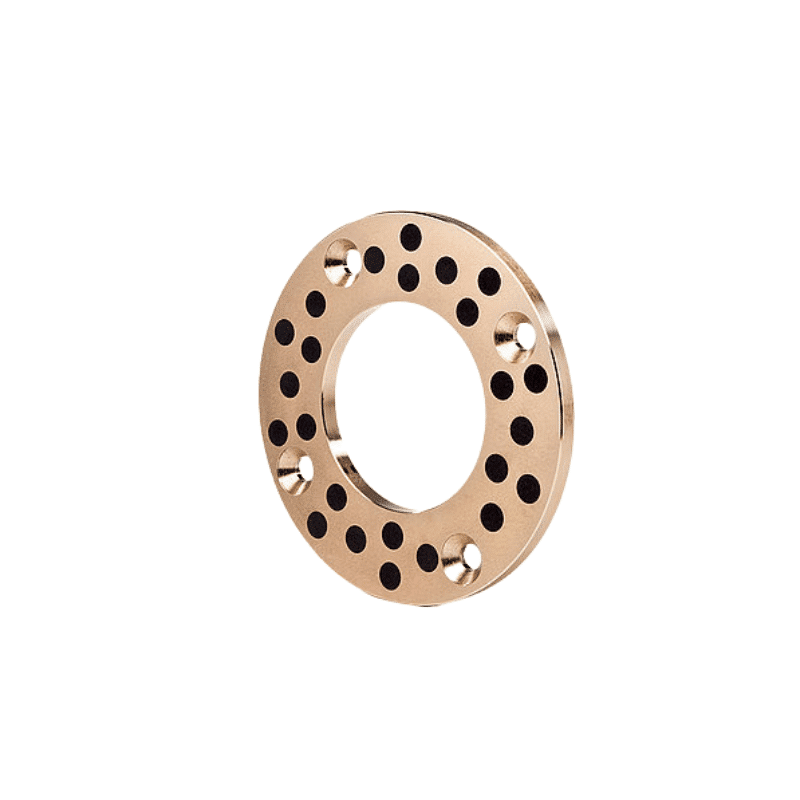
Self Lubricated Graphite Washer
Most widely used for Bridge Bushings and Plates and becoming more popular for bushings. Used in extreme load applications. Lubrication-free system – bronze bushings. Graphite self-lubricating series bearings are oil-free and have solid permanent lubrication. They are the ideal combination of load/speed and temperature extremes, ensuring better sliding conditions through a permanent film that forms when movement begins between the compound and the bearing.
Custom Aluminum Bronze- Machining Aluminum Bushing Parts
CNC Aluminum Bronze Machining, Prototype Machining: Ensure Quality and Precision Commitment to Fast Delivery. From prototype to production, get custom aluminum bronze parts at consistently low prices. ISO-certified factory to meet your most strict specifications for the machined aluminum bronze bushing. On-Demand Low-volume CNC Machining Quality, Affordability, Precision and Complex Machining One-stop Custom Finishes On Demand, Prototyping and Manufacturing One-Stop Services in China. Custom manufacturer of bushings made from aluminum bronze parts, brass, and bronze.
RANGE OF APPLICATION
Mining equipment, crane manufacturing, marine and offshore industry, hydraulic cylinders, construction equipment, vehicle manufacturing

